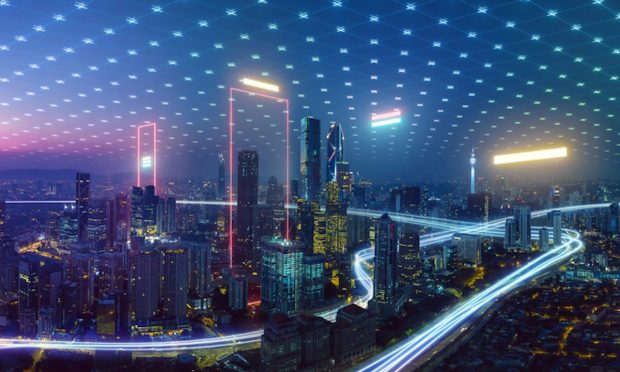Advanced Tech Adds Miles of Progress to Smart City Vision

The global smart cities landscape is evolving, driven by the fusion of urbanization and technological advancements.
This transformative shift is underscored by the recent release of the “2024 Smart City Index,” a collaborative effort between the IMD World Competitiveness Center and the World Smart Sustainable Cities Organization (WeGO). This index provides key insights into the evolving terrain of smart urban development worldwide.
Drawing data from 142 cities across the globe, the index offers a detailed assessment of various types of smart cities, reflecting diverse experiences within each. Notably, European and Asian cities dominate the top positions, with Zurich, Oslo, Canberra, Geneva and Singapore leading the pack in the latest rankings.
The index also highlights the pivotal role of digital transformation in shaping the future of cities, as artificial intelligence (AI) permeates municipal services such as traffic management, surveillance, and energy consumption. This integration of technology into urban infrastructure is seen as instrumental in addressing pressing urban challenges, including traffic congestion and environmental sustainability.
Against this backdrop, technology firms are playing an increasingly active role in advancing smart city initiatives. For instance, Paris-based tech company Thales recently extended its collaboration with Neural Labs, focusing on AI-powered solutions for vehicle access control and logistical planning. This partnership aims to enhance software deployment and scalability, ensuring secure and efficient solutions for vehicle access control and urban mobility challenges.
Meanwhile, PYMNTS has examined the use of artificial intelligence (AI) in the planning of smart cities, focusing on its integration with digital twins. These digital replicas of physical objects and systems gain enhanced functionality through AI algorithms, which analyze and adapt based on gathered information.
As Vlad Panov, vice president of engineering at the consulting firm Publicis Sapient, explained in a recent interview, “AI plays a pivotal role in enhancing the utility of digital twins, transforming them from mere static virtual replicas into dynamic and interactive models that can simulate real-world scenarios comprehensively.” This integration, he added, enhances the utility of digital twins across various sectors, facilitating better decision-making and resource optimization.
In a separate interview with PYMNTS, Tal Kreisler, CEO and co-founder at NoTraffic, highlighted the transformative potential of AI and connected vehicles in mitigating traffic congestion and improving urban mobility. According to Kreisler, by leveraging AI-driven traffic management systems, cities can dynamically adjust traffic signals based on real-time data, optimizing traffic flow and prioritizing diverse mobility needs, including pedestrian safety and public transportation.
He further emphasized the importance of deploying sensing devices to enable dynamic traffic management, enhancing throughput, and ultimately improving the overall quality of urban living.
“The way we see it … once we have sensing devices deployed, then we can transform the intersections into a dynamic network that can operate in a holistic way that allows agencies to define various policies,” he added, noting that this capability ensures that solutions can be tailored to diverse traffic scenarios, including extreme weather conditions and varying traffic patterns.
As cities continue to grapple with urbanization and its associated challenges, the evolution of smart city dynamics remains a focal point for policymakers, urban planners, and technology innovators alike. By embracing digital transformation, fostering collaboration, and prioritizing sustainability, cities can navigate the complexities of urban development, paving the way for a smarter, more connected future.

